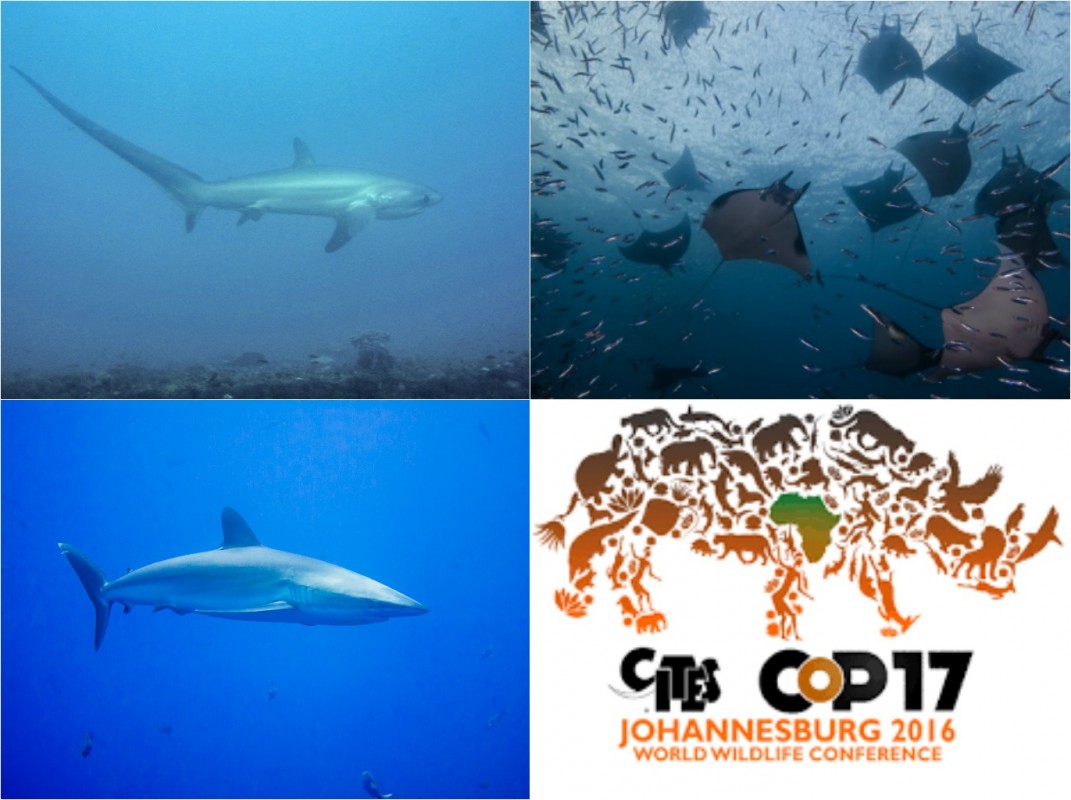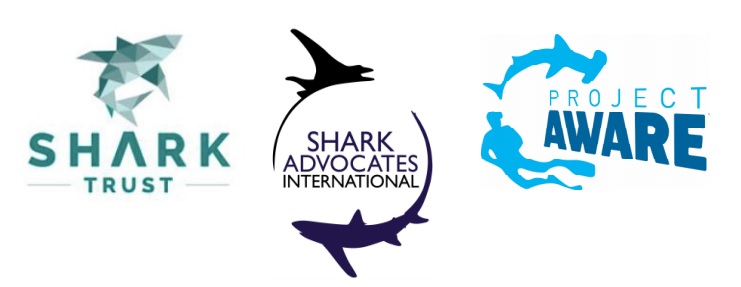Support for New Shark and Ray Trade Measures Grows

Conservationists are applauding news that 50 countries have joined efforts to list devil rays, threshers, and silky sharks under Appendix II the Convention on International Trade in Endangered Species (CITES). Cosponsors to the proposals – made originally by Fiji, Sri Lanka, and Maldives (respectively) – now include the European Union and its 28 Member States, Bangladesh, Brazil, Egypt, United Arab Emirates, and eight West African nations. Many other countries are co-sponsoring one or two of the proposals. CITES Appendix II listing prompts controls for holding international trade to sustainable levels. April 27 was the deadline for CITES proposals. Parties will vote on proposals at the September 24-October 5 Conference of Parties in Johannesburg.
“CITES listing for devil rays, threshers, and silky sharks can greatly improve the outlook for these vulnerable, globally traded species, while also helping to fulfill commitments for previously listed sharks and rays,” said Sonja Fordham, President of Shark Advocates International. “The addition of co-sponsoring countries from across the globe demonstrates widespread support for new measures to prevent international trade from driving depletion.”
Devil rays, along with closely related mantas, are among the oceans’ most vulnerable animals, usually producing just one pup every one to three years. International demand for their gill plates, used in a Chinese health tonic, drives largely unregulated fisheries. Manta rays were listed under CITES Appendix II in 2013.
Thresher sharks are characterized by long, scythe-like tails that account for half their body length. Their meat and fins are both valuable and traded internationally. Exceptionally small litters of just two to four pups greatly hinder thresher sharks’ ability to withstand heavy fishing pressure.
“Divers are wild about sharks, and few species attract more interest than the famous threshers of the Philippines,” said Ania Budziak, Associate Director for Project AWARE. “We are excited that, as governments increasingly recognize tourism as an economically viable alternative to shark and ray fishing, divers’ voices are playing a key role in promoting protections for these iconic species.”
Silky sharks are at risk from substantial incidental take in tropical, high-seas fisheries, which is exacerbated by strong Asian demand for their fins. Largely unmanaged fishing pressure, combined with low productivity and inadequate limits, has led to serious population depletion in several regions.
“We are pleased that the EU continues to champion shark and ray conservation at all relevant international fora,” said Ali Hood, Director of Conservation for the Shark Trust. “We encourage continued EU leadership in CITES and regional fisheries bodies to safeguard threshers, silky sharks, and devil rays, but also urge EU-level limits for the most heavily fished sharks not protected by or proposed for CITES listing, including makos and blue sharks.”
Shark Trust, Project AWARE, and Shark Advocates International are working with other NGOs and governments to encourage adoption of the CITES listing proposals for sharks and rays, as well as new fishing limits.
Download the full Press Release - Also available in Spanish




